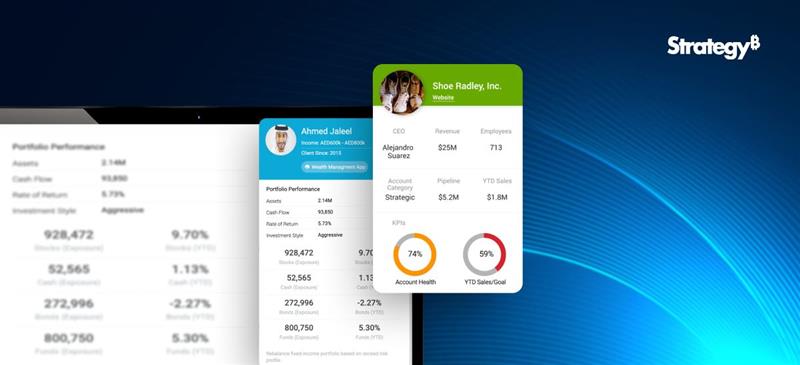Recommender Engines
Recommender Engines provide suggestions of products based on the interests or requirements of the customers by leveraging AI and Machine Learning technologies. It operates by discovering patterns in data on customer behaviour, which may be gathered directly or indirectly. To put it another way, the AI recommendation engine delivers a collection of recommendations suited to the user’s needs, demands, behaviours, and preferences.
Recommender engines are employed to increase sales, boost customer engagement and retention, and provide customised user experiences. According to McKinsey, these approaches can boost a company’s sales by 20% and profitability by 30%.
Types of Product Recommendation Engines
The companies should select models that best match their personalisation plans to offer product recommendations to website users. You can choose from the three models given below:
1. Collaborative filtering
The goal of collaborative filtering is to forecast what a person will like based on their similarity to other users by gathering and analysing data on consumer behaviours, interests, and inclinations.
Collaborative filtering uses a matrix-style method to calculate and depict these similarities. It has the benefit of not requiring content analysis or comprehension. It simply chooses which goods to recommend based on what it knows about the consumer.
E-commerce sites reap benefits out of collaborative filtering. For instance, if two users have purchased the same products and have similar interests, the system discovers the similarities and gives shopping suggestions based on them. Later, if either of the same users log in for shopping, it offers tips based on the other person’s interests, as the model knows that both have similar interests. To generate correct recommendations for new users, the engine needs enough customer and traffic data, which is the fundamental component of this strategy.
2. Content filtering
The principle behind content-based filtering is that if you choose one product, you’ll probably select the other one as well. To provide suggestions, algorithms compare objects based on a customer preference profile and a description of the item. A series of recommendations are given to the customer based on his preferences and the history of his earlier purchases.
For instance, content-based filtering on YouTube suggests videos to users by gathering data on the related content users have already viewed or searched. It collects data on the content that a specific user has watched, and it then begins to suggest additional content with a related theme based on comparable descriptions.
3. Hybrid Filtering
A hybrid filtering tool examines both content-based and collaborative data using vector equations. It analyses the historical activity data and preferences of the user for whom the recommendations are displayed. In this way, this approach combines the most compelling features of the first two to produce a single, well-rounded answer.
Let’s take the example of Netflix; it considers both the user’s interests (collaborative) and the plot, genre or cast of the film or television series (content-based). Then, based on the users’ actions, pursuits, and preferences, a collaborative filtering matrix can be utilised to suggest movies or series to them.
3. Hybrid Filtering
A hybrid filtering tool examines both content-based and collaborative data using vector equations. It analyses the historical activity data and preferences of the user for whom the recommendations are displayed. In this way, this approach combines the most compelling features of the first two to produce a single, well-rounded answer.
Let’s take the example of Netflix; it considers both the user’s interests (collaborative) and the plot, genre or cast of the film or television series (content-based). Then, based on the users’ actions, pursuits, and preferences, a collaborative filtering matrix can be utilised to suggest movies or series to them.
Benefits of Recommender Engines
Product recommendation engines offer your company numerous advantages. Over time, its benefits will offset the expense of putting it into practice. This is how:
1. Customer retention
It is worth emphasising that product recommendation systems are one of the most efficient and widely recognised applications of machine learning in business. When properly configured and implemented, they will boost sales and increase click-through rate as well as customer engagement and other KPIs in every online store. It results from the fact that customising product recommendations and content to the preferences of a specific user has a positive impact on the user’s experience with a given website.
2. Increase in sales
When the recommendation system is correctly configured and deployed, product recommendations may lead to an increase in revenues in the online store. Personalising offers increases the likelihood that users will browse the page and stay on it longer. Targeted visitors to the website receive emails or advertisements for suitable products increases the efficacy of marketing campaigns. It reduces the rate of returns and cart abandonments. Finally, the Average Order Value (AOV) and the number of items in carts are both significantly increased by recommendation engines.
3. Customer behaviour detection
The ability to provide a wide range of relevant facts and metrics regarding user behaviour and website traffic is another benefit of personalised recommendation systems. Online store owners who have incorporated recommendation systems have a better grasp of customer behaviour and may adjust the product selection to suit their demands. Customers do not need to spend time browsing through all of the products on the website because those that they could find interesting will be displayed in the recommendation box with suggested products.
Smart Avatars as Advanced Recommender Engines
Currently, recommender engines have a standard text-based user interface as their front end. The arrival of the 3D web and the metaverse, however, will cause that front end to become more avatar-focused over the next years. So, in the near future, you will be greeted by a smart avatar on a shopping website, who will not only have some knowledge of who you are and what you might desire, but it will also engage in dialogue with you to learn more about your wants and assist you in finding the solution. Isn’t that cool? The avatar will ensure that you got a great shopping experience and instantly address any complaints that cross your mind. We are gonna love it, aren’t we?
Summing Up
By presenting products that customers would probably not have otherwise seen, a recommendation system will enhance the shopping experience. The efficiency of recommendation engines as a marketing tool can increase sales, click-through rates, engagements, and consumer happiness. No matter what technology you use, the installation procedure is quick and straightforward and doesn’t require any programming experience.
Beinex Offerings
Beinex enables organisations to analyse data, mitigate risks, identify opportunities, make better decisions, and automate processes to drive business excellence powered by innovation and experience. Our AI solutions make your business future-ready and include services like risk sensing and cognitive risk anticipation using Machine Learning (ML), Artificial Intelligence (AI) to assess risk in real-time. Just give it a try, and reach out to us at: https://www.beinex.com/ai-ml-rpa/




